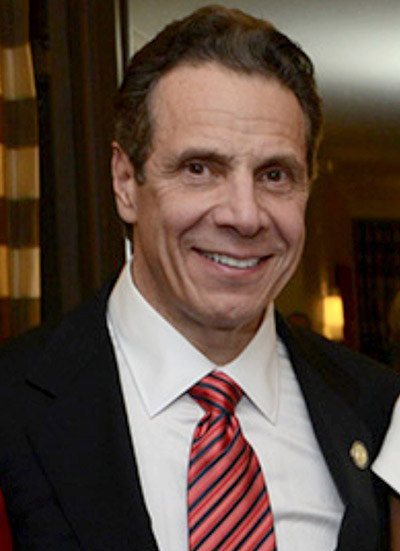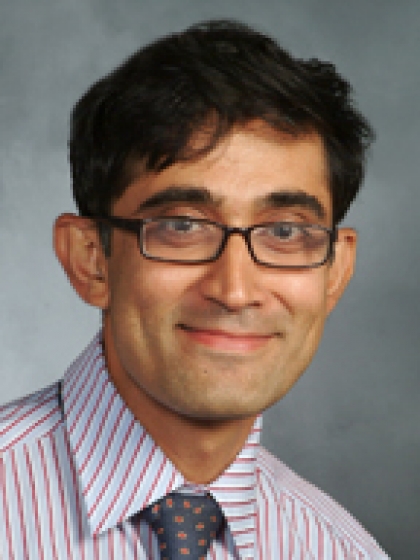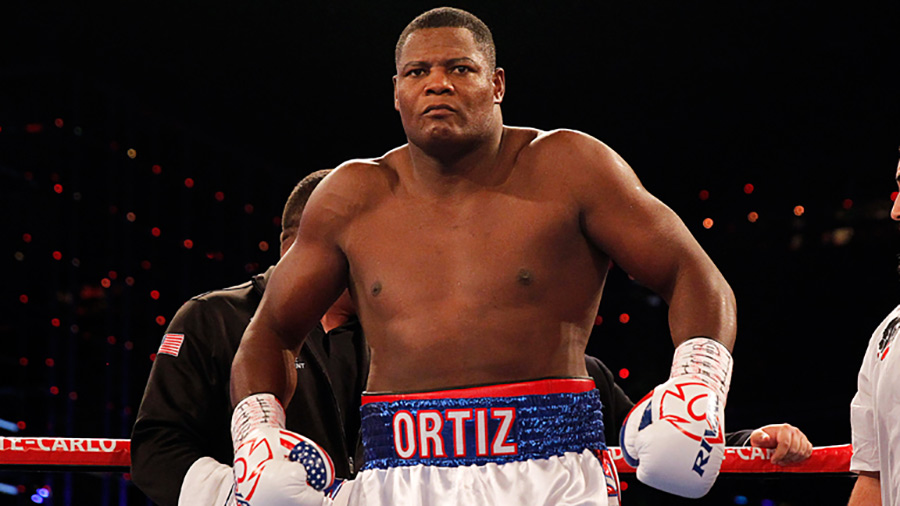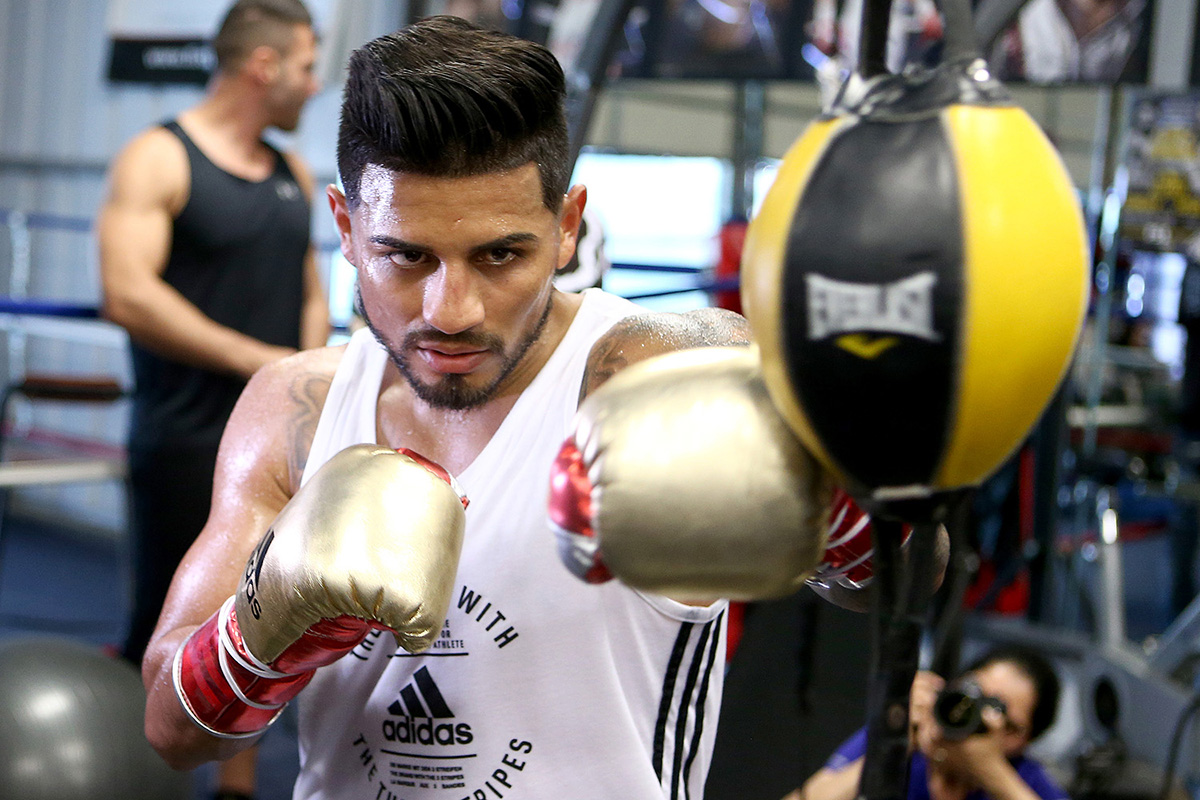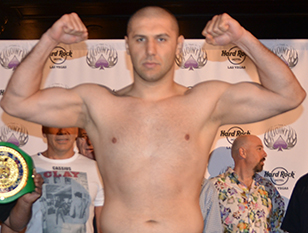Behind the Facade at the New York State Athletic Commission: Part One

In July 2017, soon after Kim Sumbler was named acting executive director of the New York State Athletic Commission, I wrote, “Sumbler is entitled to a grace period to show what she can do in the job.”
Twenty months have passed since then. Last June, the New York State Senate confirmed the appointment of three new commissioners designated by New York governor Andrew Cuomo, bringing the total number of NYSAC commissioners to five. And Sumbler has begun to put her imprint on the commission. It’s now time to evaluate what’s happening.
The NYSAC might be the most politicized state athletic commission in the country.
The first thing to be said about the New York State Athletic Commission is that it’s better than most state athletic commissions in the United States.
It should be. New York and boxing have been intertwined for a century. In 2016, mixed martial arts was added to the mix. And the NYSAC costs taxpayers a lot of money. There are some dedicated hardworking public servants who work for the commission. But there are also problems.
Many of the problems start with the fact that the NYSAC might be the most politicized state athletic commission in the country. Politics is essential to proper governance. But at a time when Andrew Cuomo’s supporters hope that he’ll be in the vanguard of public officials demonstrating how government and politics can work to better the lives of citizens, the NYSAC is often hamstrung by a politics-first environment that negatively influences decisions.
Larry Merchant once said, “Boxing and politics are the two best places in the world to study human behavior.” At the New York State Athletic Commission, they coincide.
The NYSAC is part of the New York State Department of State. That places it directly within Governor Cuomo’s political domain. The Department of State hires and fires key commission personnel. In this environment, political connections can take priority over performance. This applies to some – not all – full-time jobs at the commission. And it filters down to the selection of fight-night officials such as inspectors, referees, and judges. An all-too-familiar refrain heard at the NYSAC is, “We can’t touch him; his father is friendly with a state senator,” or “This one is off limits; one of Andrew’s political backers is in his corner.”
Speaking on condition of anonymity, one commission employee says , “Every major decision gets bounced up to the Department of State. We’re told that the lines of communication with the governor’s political people are always open. You can look at that and say that they’re available to help. Or you can look at it and say they’re interfering.”
“Which do you say?” the employee is asked.
“The latter.”
Success at the New York State Athletic Commission should be measured in terms of how well employees are doing their respective jobs. Instead, undue attention is paid to the “optics” of a situation — the way in which an event or course of action is perceived by the public.
Two years ago, an article by Carl Campanile in the New York Post noted, “Governor Cuomo’s office has warned public-relations officers at fifty-five state agencies to start churning out a lot more good news about the administration – or else. Cuomo’s communications director, James Allen, delivered the stern message in a conference call last week, leaving some of the agency officials rattled. ‘If you don’t generate more press releases, changes will be made!’ Allen declared, according to one source.”
Nine months later, Luana Ferreira (then the licensing access and language access coordinator for the NYSAC) sent out a memorandum to all commission staff that began, “Greetings to all! The holiday season is upon us and there has been much conversation about bringing together our wonderful NYSAC community to join in the festivities. There is much to celebrate, such as the good press we have been getting (including the article in the NY Post, YES! the NY Post).”
As former NYSAC commissioner John Signorile declared, “Our job is to protect the fighters, help the promoters make some money, and make the governor look good.”
“Optics” have been a point of instruction at training symposia for NYSAC personnel. One commissioner has denounced critics of the commission as “haters” and stated at a commission meeting, “I’m a little concerned about creating policy like this. Are we gonna be, you know, what’s the public gonna think? Let’s take the haters out there. How are we gonna get criticized on this? What are they gonna say? I wanna be prepared for any negative backlash.”
That’s not politics. It’s bad politics. When a government entity is operating properly, the optics take care of themselves.
One of the most frustrating things for journalists who deal with the New York State Athletic Commission is its circle-the-wagons approach.
If a writer calls Bob Bennett (executive director of the Nevada State Athletic Commission), Bennett picks up the telephone and answers questions. The same is true of Andy Foster in California, Larry Hazzard in New Jersey, Greg Sirb in Pennsylvania, Mike Mazzulli at Mohegan Sun, and most other point people at athletic commissions in the United States.
By contrast, in New York, all formal inquiries to NYSAC personnel are channeled through Department of State media specialists who ask that questions be submitted in writing. Then, more often than not, they send back bland, politically-attuned responses or don’t respond at all.
When a government entity is operating properly, the optics take care of themselves.
On February 11, 2019, Lee Park (director of communications for the New York State Department of State) refused a request by this writer to make Kim Sumbler, Theresa D’Andrea (counsel for the NYSAC), and James Vosswinkel (the most engaged of the five NYSAC commissioners) available for interviews. A number of NYSAC employees were willing to provide information for this series of articles on condition of anonymity.
It’s difficult to present the position of NYSAC officials with regard to criticism regarding their performance when they refuse to answer questions. Then again, maybe their refusal is an indication that they don’t have answers.
Meanwhile, secrecy begets mistakes. In a secretive environment, fewer people are aware of the existence of problems. That makes it less likely that the problems will be brought to the attention of people who should know about them and less likely that solutions will be found.
The most important function a state athletic commission performs is overseeing the health and safety of fighters. This goes beyond what happens on fight night. A host of related issues are involved.
Fight night medical care in New York is much better now than it was before. Part of this is due to the revision of NYSAC medical protocols after Magomed Abdusalamov suffered life-altering brain damage in a fight against Mike Perez at Madison Square Garden five years ago. It’s also a tribute to Nitin Sethi, a neurologist affiliated with Weill Cornell Medicine in New York. Dr. Sethi became chief medical officer for the NYSAC in the aftermath of the Abdusalamov tragedy. He has been instrumental in the revision of medical protocols and oversees the NYSAC medical team on fight night.
But there’s need for improvement.
The most glaring medical deficiency at the New York State Athletic Commission is the lack of understanding and resolve with regard to the use of illegal performance-enhancing drugs. Illegal PED use is not a victimless crime. It results in fighters being hit in the head harder than would otherwise be the case and thus sustaining more short-term and long-term brain damage. It is one of the reasons that fighters die.
Last year, the Nevada State Athletic Commission pulled down what was expected to be the biggest fight of the year – a scheduled “Cinco de Mayo” rematch between Canelo Alvarez and Gennady Golovkin – when it suspended Alvarez for six months after he tested positive for clenbuterol. On a smaller scale, the Massachusetts State Athletic Commission denied a request for a license by Billy Joe Saunders to defend his WBO 160-pound title against Demetrius Andrade after it learned that Saunders had tested positive for oxilofrine.
Contrast that with New York’s handling of situations involving Luis Ortiz, Jermall Charlo, and Jermell Charlo.
Ortiz, who had tested positive for illegal performance-enhancing drugs on multiple occasions, was scheduled to fight Deontay Wilder at Barclays Center in Brooklyn on March 3, 2018. How did the NYSAC handle the PED issue? On January 10, 2018, the commission sent a letter to DiBella Entertainment (which was promoting the fight) advising it that Ortiz would be required to undergo testing for anabolic steroids, diuretics, masking agents, and a ten-panel drug urine test no later than January 19 and, again, fifteen days before the fight as a condition of licensure.
This is the equivalent of law enforcement authorities giving a suspect nine days notice before executing a search warrant to raid his apartment for drugs.
Similarly, Jermall and Jermell Charlo were scheduled to fight in co-featured bouts at Barclays Center on December 22, 2018. But a problem arose when both brothers were unavailable for required PED tests that were to be administered on November 1 by the Voluntary Anti-Doping Association and failed to answer their telephones or otherwise provide VADA with information regarding their whereabouts for the entire day.
Jermall Charlo later maintained that he and his brother were “out of town doing promotional stuff.” A diligent inquiry by the NYSAC would have followed up with questions like, “Where were the Charlos doing their out-of-town promotional work? Presumably, there would have been a record of their travel. What, specifically, was the promotional work? Who did they meet with? Where did the promotional work appear? And why didn’t the Charlos answer their telephones when VADA’s collection agents attempted to reach them?” VADA could have tested them in whatever city they were in.
The New York State Athletic Commission did, in fact, request some information from the Charlos regarding their missed tests. But according to a well-placed source within the commission, the Charlos refused to provide it.
Rather than press the issue, the NYSAC then asked the Charlos to provide test samples to Quest Diagnostics and Labcorp (each company tested a different brother).
In today’s world of microdosing, twenty-four hours is often more than enough time for a dirty fighter to get “clean.”
There’s no evidence on the public record that the Charlos were using illegal performance-enhancing drugs. That said, the unfortunate message sent by the New York State Athletic Commission in this instance was that if a fighter were to take an illegal performance-enhancing drug and, by chance, VADA showed up to test him while the drug was still in his system, he could simply “miss” the test.
This is the equivalent of law enforcement authorities giving a suspect nine days notice before executing a search warrant to raid his apartment for drugs.
Do the people who run the NYSAC really think that’s how to protect the health and safety of fighters? Or were they more interested in not making waves and not interfering with a fight that powerful economic interests supported?
Also, laying these individual cases aside, the New York State Athletic Commission’s drug-testing program is fundamentally flawed. The commission takes a pre-fight urine sample from each fighter on fight night. For championship bouts, a post-fight urine sample is also taken.
Having fighters urinate into a cup on fight night does not constitute a comprehensive PED-testing program. And more significantly, neither Quest Diagnostics nor Labcorp (where samples are sent by the NYSAC) is accredited by the World Anti-Doping Agency. Here, the thoughts of VADA president Dr. Margaret Goodman are instructive.
“There’s a reason that VADA and USADA use WADA-accredited labs,” Dr. Goodman says. “WADA enforces standards that a WADA-accredited lab must meet. Quest and Labcorp are good labs, but they don’t have the ability or the equipment to perform certain tests. They aren’t as sophisticated as a WADA-accredited lab. They don’t test for everything that a WADA-accredited lab tests for. They don’t have the same equipment and the same sensitivity levels in terms of their ability to pick up certain illegal substances. If you’re serious about PED testing, you use a WADA-accredited lab.”
In some respects, the NYSAC is more conscientious in its treatment of medical issues than other commissions. For example, fighters who aren’t allowed to fight in New York are often licensed to fight elsewhere in the country. The NYSAC refused to license Abner Mares to fight Jesus Cuellar on a June 25, 2016, card at Barclays Center because eye issues (including surgery for a detached retina) had left Mares with what one source says was 20/400 vision in his left eye. Thereafter, Mares fought three times in California before suffering a detached retina in his right eye that forced him out of a scheduled February 9, 2019, bout against Gervonta Davis (also in California).
But while the NYSAC has a good record of denying impaired fighters a license to fight, it doesn’t take the next step of red-flagging fighters who have been denied a license and advising other states to contact the NYSAC medical staff if that fighter applies for a license to compete in another jurisdiction.
The NYSAC does have what it calls a “red flag” policy of its own that was instituted because of internal concern that its medical staff wasn’t observing certain fighters for a long enough period of time after a bout. Fighters who had minor headaches, balance issues, or blood in their urine were allowed to leave the arena without further observation. Now NYSAC doctors can require a fighter to remain on site for further observation and determine if the symptoms in question clear up or worsen.
That’s a step in the right direction, but it’s not enough. Suppose Magomed Abdusalamov had been red-flagged? By the time he started showing neurological symptoms and was taken to the hospital, much of the “golden hour” necessary for effective surgical intervention would have been lost.
If a fighter’s condition warrants his being red-flagged, he should be sent to the hospital for observation. This is a man or woman who has been punched in the head, often more than a hundred times, by a professional fighter trained in the art of hurting.
But no medical protocols will be effective if they aren’t properly administered. This requires standing up to powerful economic interests – such as UFC – when warranted.
On November 4, 2017, Michael Bisping tapped out while being choked by Georges St-Pierre at UFC 217 at Madison Square Garden. A left hook and series of forearms smashes had immobilized Bisping. Then St. Pierre applied a naked chokehold that ended the bout.
Bisping appeared to temporarily lose consciousness. That night, he was placed on a 30-day medical suspension by the NYSAC medical staff. Then, in mid-November, UFC contacted Kim Sumbler, told her that Bisping had been judged fit to fight by a neurologist in California, submitted supporting medical documentation, and asked that the suspension be lifted. Sumbler passed the request on to the appropriate NYSAC medical personnel, and the suspension was lifted. On November 25, three weeks after enduring a beating in New York, Bisping was knocked out by Kelvin Gastelum on a UFC fight card in Shanghai. He has not fought since. In May 2018, Bisping announced his retirement from MMA competition. Later, he said that he retired as a consequence of an injury suffered in the Gastelum fight.
The Michael Bisping situation left many in the MMA community aghast.
Dr. Tad Seifert, a neurologist and member of the Association of Boxing Commissions medical advisory committee, told Mark Raimondi of MMA Fighting that he believed allowing Bisping to fight in Shanghai was “grossly negligent.”
“I think it’s incumbent upon us that are involved with commissions to be vigilant in fighter health and safety,” Seifert explained. “That’s got to be our utmost priority. And a guy that’s 38 years old and historically been downed more than any other fighter in the history of the UFC, that was at least visibly – through the eyes of what the videos tell us – concussed twenty-one days prior; to lift that suspension, I think, was a bit reckless. I try not to be critical of scenarios like this, but this is one of those that I couldn’t keep my mouth shut.”
MMA writer Ben Fowlkes observed, “The second [stoppage] was a lot harder to watch than the first. That’s at least in part because the memory of the first one was still so fresh. While doctors know it’s probably not great to group your brain traumas too close together, there’s no way to determine in advance when it’s bound to be especially bad.”
UFC commentator Joe Rogan declared, “You really can’t be letting a guy fight three weeks after an absolutely brutal fight like that. It just does not make sense. It does not make sense.”
Former UFC commentator Brian Stann added, “This was an awful decision to allow him to fight. He was rocked badly against Georges St-Pierre. He wasn’t just choked out. The human brain does not recover that fast.”
The men and women who run the New York State Athletic Commission are regulators. They shouldn’t be enablers.
Dr. Michael Schwartz (founder and first president of the Association of Ringside Physicians) says that he’s not in a position to comment specifically on Michael Bisping since he didn’t examine the fighter or the fighter’s medical records. But Schwartz does say, “In general, suspensions are based on medical evidence that suggests a minimum amount of time and should be upheld unless there’s overwhelming compelling evidence that the initial suspension was inappropriate. Also, it’s important to consider whether a medical examination cited in support of lifting a suspension was conducted by a truly neutral party or a doctor sought out on behalf of the suspended fighter.”
It’s safe to say that the NYSAC would not have allowed Michael Bisping to fight in New York twenty-one days after he’d been beaten badly and choked unconscious. It should not have paved the way for him to fight in another jurisdiction either. Would the NYSAC have done this for a promoter other than UFC? I doubt it.
“I think Nitin has done a great job,” a doctor who has worked closely with Dr. Sethi at the NYSAC says. “Overall, his presence at the commission has been a huge plus. He cares. He has tried very hard to educate the medical staff and other commission personnel regarding issues of fighter safety. He’s hands-on on fight night. But the Michael Bisping situation troubles me. He should have put his foot down on that one.”
The men and women who run the New York State Athletic Commission are regulators. They shouldn’t be enablers.
Meanwhile, one way to advance the health and safety of fighters is to have an active, knowledgeable medical advisory board.
The NYSAC has a medical advisory board. But according to the New York State Athletic Commission website, this board has met only once since June 2017. That was on September 19, 2018. Four of the nine board members were physically present. Two more participated via an electronic hook-up. The meeting lasted 24 minutes. Business consisted of approving the minutes of the board’s previous meeting (which had occurred fifteen months earlier) and approving the appointment and reappointment of NYSAC physicians. Dr. Sethi also answered one question put to him by a committee member.
“They’re playing Russian roulette with fighter safety,” a commission doctor says of the board. “And some of them don’t even know it.”
***
Read Part Two of “Behind the Facade at the New York State Athletic Commission”
Thomas Hauser can be reached by email at [email protected]. His most recent book – Protect Yourself at All Times – was published by the University of Arkansas Press. In 2004, the Boxing Writers Association of America honored Hauser with the Nat Fleischer Award for career excellence in boxing journalism.


